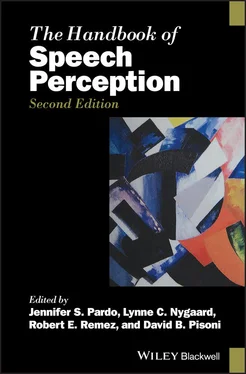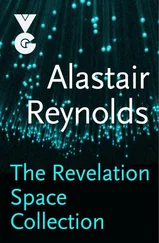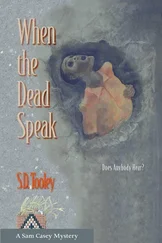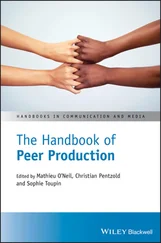178 Stoffregen, T. A., & Bardy, B. G. (2001). On specification and the senses. Behavioral and Brain Sciences, 24(2), 195–213.
179 Strand, J., Cooperman, A., Rowe, J., & Simenstad, A. (2014). Individual differences in susceptibility to the McGurk effect: Links with lipreading and detecting audiovisual incongruity, Journal of Speech, Language, and Hearing Research, 57, 2322–2331.
180 Striem‐Amit, E., Dakwar, O., Hertz, U., et al. (2011). The neural network of sensory‐substitution object shape recognition. Functional Neurology, Rehabilitation, and Ergonomics, 1(2), 271–278.
181 Sumby, W. H., & Pollack, I. (1954). Visual contribution to speech intelligibility in noise. Journal of the Acoustical Society of America, 26(2), 212–215.
182 Summerfield, Q. (1987). Some preliminaries to a comprehensive account of audio‐visual speech perception. In B. Dodd & R. Campbell (Eds), Hearing by eye: The psychology of lip‐reading (pp. 53–83). London: Lawrence Erlbaum.
183 Summerfield, Q., & McGrath, M. (1984). Detection and resolution of audiovisual incompatibility in the perception of vowels. Quarterly Journal of Experimental Psychology, 36A, 51–74.
184 Sundara, M., Namasivayam, A. K., & Chen, R. (2001). Observation‐execution matching system for speech: A magnetic stimulation study. NeuroReport, 12(7), 1341–1344.
185 Swaminathan, S., MacSweeney, M., Boyles, R., et al. (2013). Motor excitability during visual perception of known and unknown spoken languages. Brain and Language, 126(1), 1–7.
186 Teinonen, T., Aslin, R. N., Alku, P., & Csibra, G. (2008). Visual speech contributes to phonetic learning in 6‐month‐old infants. Cognition, 108(3), 850–855.
187 Thomas, S. M., & Jordan, T. R. (2002). Determining the influence of Gaussian blurring on inversion effects with talking faces. Perception & Psychophysics, 64, 932–944.
188 Tiippana, K. (2014). What is the McGurk effect? Frontiers in Psychology, 5, 725–728.
189 Tiippana, K., Andersen, T. S., & Sams, M. (2004). Visual attention modulates audiovisual speech perception. European Journal of Cognitive Psychology, 16(3), 457–472.
190 Treille, A., Cordeboeuf, C., Vilain, C., & Sato, M. (2014). Haptic and visual information speed up the neural processing of auditory speech in live dyadic interactions. Neuropsychologia, 57(1), 71–77.
191 Treille, A., Vilain, C., & Sato, M. (2014).The sound of your lips: Electrophysiological cross‐modal interactions during hand‐to‐face and face‐to‐face speech perception. Frontiers in Psychology, 5, 1–8.
192 Turner, T. H., Fridriksson, J., Baker, J., et al. (2009). Obligatory Broca’s area modulation associated with passive speech perception. Neuroreport, 20(5), 492–496.
193 Uno, T., Kawai, K., Sakai, K., et al. (2015). Dissociated roles of the inferior frontal gyrus and superior temporal sulcus in audiovisual processing: Top‐down and bottom‐up mismatch detection. PLOS ONE, 10(3).
194 van de Rijt, L. P. H., van Opstal, A. J., Mylanus, E. A. M., et al. (2016). Temporal cortex activation to audiovisual speech in normal‐hearing and cochlear implant users measured with functional near‐infrared spectroscopy. Frontiers in Human Neuroscience, 10, 1–14.
195 Van Engen, K. J., Xie, Z., & Chandrasekaran, B. (2016). Audiovisual sentence recognition is not predicted by susceptibility to the McGurk effect. Attention, Perception, &Psychophysics, 79, 396– 403.
196 van Wassenhove, V. (2013). Speech through ears and eyes: Interfacing the senses with the supramodal brain. Frontiers in Psychology, 4, 1–17.
197 van Wassenhove, V., Grant, K. W., & Poeppel, D. (2007). Temporal window of integration in auditory‐visual speech perception. Neuropsychologia, 45(3), 598–607.
198 van Wassenhove, V., Grant, K. W., & Poeppel, D. (2005). Visual speech speeds up the neural processing of auditory speech. Proceedings of the National Academy of Sciences of the United States of America, 102(4), 1181–1186.
199 Venezia, J. H., Fillmore, P., Matchin, W., et al. (2016). Perception drives production across sensory modalities: A network for sensorimotor integration of visual speech. NeuroImage, 126, 196–207.
200 Venezia, J. H., Thurman, S. M., Matchin, W., et al. (2016). Timing in audiovisual speech perception: A mini review and new psychophysical data. Attention, Perception & Psychophysics, 78(2), 583–601.
201 von Kriegstein, K., Dogan, O., Grüter, M., et al. (2008). Simulation of talking faces in the human brain improves auditory speech recognition. Proceedings of the National Academy of Sciences of the United States of America, 105(18), 6747–6752.
202 von Kriegstein, K., & Giraud, A. L. (2006). Implicit multisensory associations influence voice recognition. PLOS Biology, 4(10), 1809–1820.
203 von Kriegstein, K., Kleinschmidt, A., Sterzer, P., & Giraud, A. L. (2005). Interaction of face and voice areas during speaker recognition. Journal of Cognitive Neuroscience, 17(3), 367–376.
204 Watkins, S., Shams, L., Tanaka, S., et al. (2006). Sound alters activity in human V1 in association with illusory visual perception. NeuroImage, 31(3), 1247–1256.
205 Wayne, R. V., & Johnsrude, I. S. (2012). The role of visual speech information in supporting perceptual learning of degraded speech. Journal of Experimental Psychology: Applied, 18(4), 419–435.
206 Wilson, A., Alsius, A., Paré, M., & Munhall, K. (2016). Spatial frequency requirements and gaze strategy in visual‐only and audiovisual speech perception, Journal of Speech, Language, and Hearing Research, 59, 601–615.
207 Windmann, S. (2004). Effects of sentence context and expectation on the McGurk illusion. Journal of Memory and Language, 50(2), 212–230.
208 Windmann, S. (2007). Sentence context induces lexical bias in audiovisual speech perception. Review of Psychology, 14(2), 77–91.
209 Yakel, D. A., Rosenblum, L. D., & Fortier, M. A. (2000). Effects of talker variability on speechreading. Perception & Psychophysics, 62, 1405–1412.
210 Yamamoto, E., Nakamura, S., & Shikano, K. (1998). Lip movement synthesis from speech based on hidden Markov models. Speech Communication, 26(1–2), 105–115.
211 Yehia, H. C., Kuratate, T., & Vatikiotis‐Bateson, E. (2002). Linking facial animation, head motion, and speech acoustics. Journal of Phonetics, 30(3), 555–568.
212 Yehia, H., Rubin, P., & Vatikiotis‐Bateson, E. (1998). Quantitative association of vocal‐tract and facial behavior. Speech Communication, 26(1–2), 23–43.
213 Zheng, Y., & Samuel, A. G. (2019). How much do visual cues help listeners in perceiving accented speech? Applied Psycholinguistics, 40(1), 93–109.
214 Zilber, N., Ciuciu, P., Gramfort, A., et al. (2014). Supramodal processing optimizes visual perceptual learning and plasticity. NeuroImage, 93, 32–46.
3 How Does the Brain Represent Speech?
OIWI PARKER JONES 1AND JAN W. H. SCHNUPP 2
1University of Oxford, United Kingdom
2City University of Hong Kong, Hong Kong
In this chapter, we provide a brief overview of how the brain’s auditory system represents speech. The topic is vast, many decades of research on the subject have generated several books’ worth of insight into this fascinating question, and getting close up and personal with this subject matter necessitates a fair bit of background knowledge about neuroanatomy and physiology, as well as acoustics and linguistic sciences. Providing a reasonably comprehensive overview of the topic that is accessible to a wide readership, within a short chapter, is a near‐impossible task, and we apologize in advance for the shortcomings that this chapter will inevitably have. With these caveats and without further ado, let us jump right in and begin by examining the question What is there to ‘represent’ in a speech signal?
Читать дальше








![О Генри - Справочник Гименея [The Handbook of Hymen]](/books/407356/o-genri-spravochnik-gimeneya-the-handbook-of-hymen-thumb.webp)



